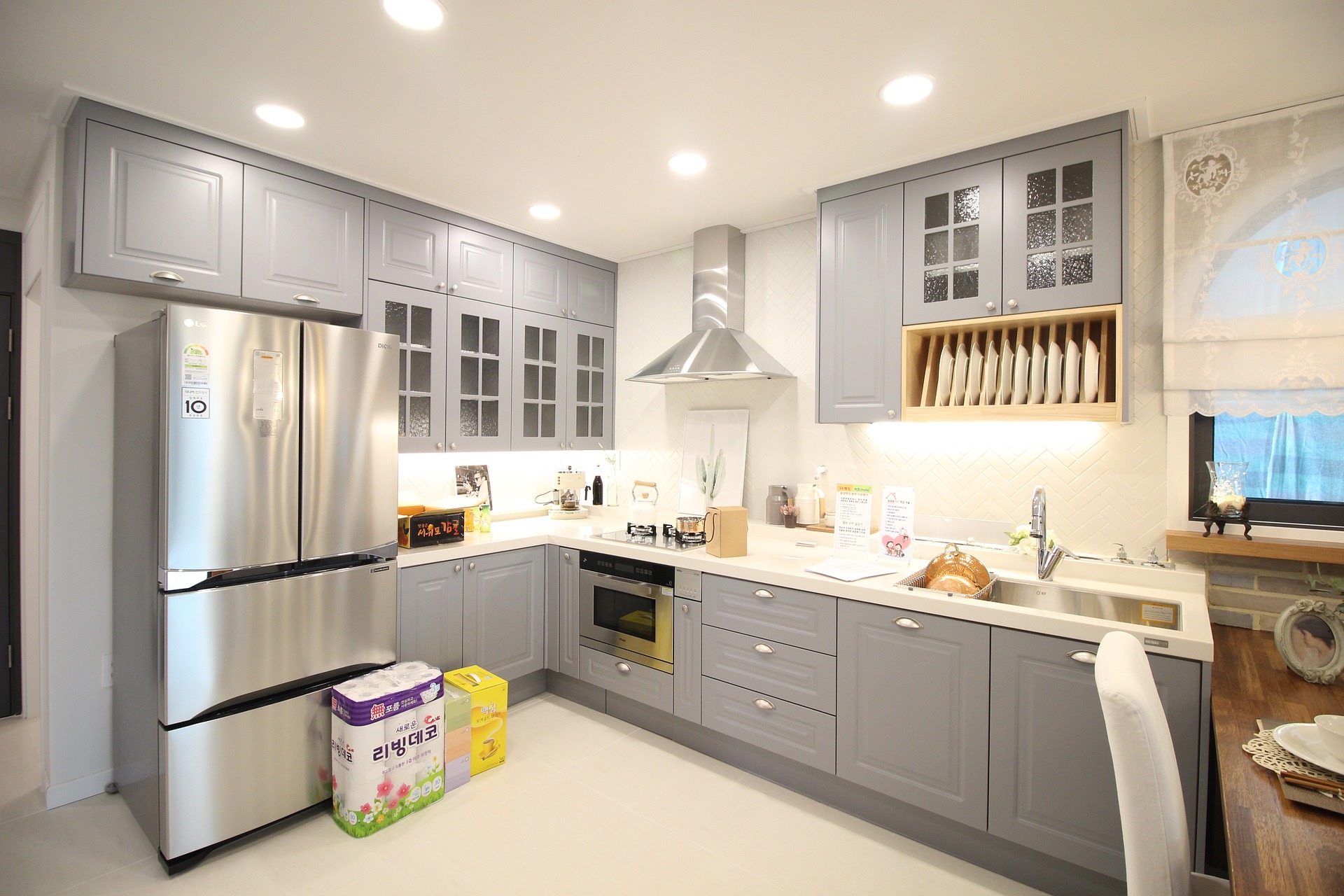Maintaining countertops and tools for consistent performance
Consistent kitchen performance starts with reliable countertops and well-kept tools. Proper upkeep extends the life of surfaces, preserves the finish of cookware, and keeps hygiene standards high. This overview explains practical maintenance routines, organization strategies, and material considerations that support daily cooking tasks while protecting investments and improving long-term functionality.
Keeping countertops and tools in dependable shape makes everyday cooking smoother and safer. Regular attention to surfaces, routine care for cookware, and thoughtful arrangement of storage and furniture reduce wear and prevent accidents. This article outlines material-specific maintenance, hygiene-focused cleaning, spaceplanning and workflow tips, and design choices—such as lighting and ventilation—that help a kitchen perform consistently over years of use.
How do materials affect countertops and cookware durability?
Different countertop materials respond to heat, moisture, and impact in distinct ways. Natural stone like granite and quartz are relatively heat- and scratch-resistant but may require periodic sealing depending on porosity. Butcher block offers warmth and renewability yet needs oiling to resist stains and warping; it’s also sensitive to prolonged water exposure. Laminate and solid-surface counters are easier to repair for minor chips but can scorch under high heat. Cookware bottoms, spilled acids, and abrasive scrubbers each interact with surfaces—using trivets, cutting boards, and appropriate cleaners protects both countertops and cookware, reducing premature wear and preserving material performance.
What maintenance keeps countertops in good condition?
Routine maintenance balances cleaning, protection, and timely repairs. Wipe counters with a gentle cleaner after food prep to keep hygiene high and avoid abrasive pads on delicate finishes. For porous materials, follow a sealing schedule recommended by manufacturers to block stains and bacteria. Address spills immediately—especially oil, wine, or acidic juices—and buff minor scratches as advised for the specific material. Keep a log of deep-cleaning or resealing tasks, and inspect seams and edges periodically; early small repairs prevent moisture intrusion and larger restoration needs.
How to organize storage and improve workflow?
Storage and organization shape how often tools contact worktops and how quickly tasks move from one zone to another. Group frequently used cookware and utensils near cooking surfaces, store cutting boards and knives safely, and place small appliances on dedicated shelves or appliance garages to free countertop space. Drawer inserts and vertical dividers save room and reduce clutter, supporting a logical workflow from prep to cook to cleanup. Consider spaceplanning that creates distinct zones—prep, cooking, plating, and cleaning—to minimize unnecessary movement and avoid cross-contamination while preserving surface condition.
How does lighting, ventilation, and appliances impact use?
Proper lighting and ventilation protect surfaces and improve task efficiency. Task lighting over prep zones reduces accidental cuts and spills; under-cabinet lights help you see stains that need immediate attention. Ventilation—range hoods and exhaust fans—removes grease and moisture that can degrade finishes or encourage bacterial growth. Appliance placement matters: avoid locating heavy or vibrating units directly on delicate countertops, and maintain appliance cords and feet to prevent scratches. Regular cleaning of hood filters and appliance exteriors reduces airborne residues that can settle on counters and cookware.
What ergonomics and furniture choices support consistent performance?
Ergonomic considerations reduce fatigue and the risk of repetitive damage to surfaces and tools. Counter height tailored to main users lowers strain and improves control when chopping or lifting cookware. Choose furniture with durable finishes and rounded edges to limit chipping; pull-out drawers and adjustable shelving reduce awkward reaches that can cause spills. Anti-fatigue mats at standing stations protect knees and soft-bottomed cookware from repeated drops. Thoughtful ergonomics prolong the useful life of both people and kitchen assets by encouraging safe, efficient routines.
How can sustainability guide long-term cleaning and upkeep?
Selecting sustainable materials and maintenance products can reduce environmental impact while supporting durability. Energy-efficient appliances cut operational costs and often include features that reduce residue buildup, such as better self-cleaning or filtered ventilation. Biodegradable cleaners and microfiber cloths limit harsh chemicals while maintaining hygiene when used correctly. Consider long-lasting finishes and repairable cookware rather than disposable alternatives; longevity reduces waste and conserves resources. Proper disposal and recycling of damaged fixtures and old appliances should be part of an ongoing maintenance plan.
Maintaining countertops and tools combines material knowledge, practical cleaning routines, ergonomic planning, and thoughtful organization. Regular inspections, immediate spill response, appropriate storage, and attention to lighting and ventilation together keep surfaces performing reliably. With modest, consistent effort—tuned to the materials and workflow of your kitchen—you can preserve hygiene, reduce repairs, and support steady cooking performance for years.






